|
Continuous record of electroencephalogram (from 2 to 20 derivations), EOG (by 2 derivations), EMG (1 or 3 derivations), ECG (1 or 3 derivations), respiration airflow (thermistor and manometrical respiration airflows from oral and/or oronasal sensors), respiratory efforts (2 sensors), snore, movement activity (wireless sensors of movement activity and/or EMG from corresponding muscles groups), oxygen saturation and other parameters at the option of user. 
Synchronous with EEG record of video and audio data (EEG videomonitoring) during telemetric study. 
Compact presentation of continuous study data on one screen. 
Automatic hypnogram building by original algorithm, using elements of fuzzy logic and cluster analysis with option of learning by example; manual hypnogram building and automatically built hypnogram editing. 
Displaying of body position change dynamics during sleep. Automatic identification of main body positions (standing, sitting, lying on the right/left side, supine, pronate). 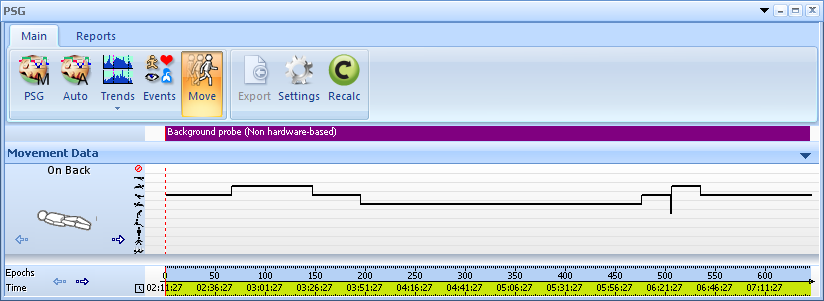
Definition and displaying with colour on the signal window of various types of respiratory disorders (central/obstructive/combined apnoea, hypopnea, desaturation), various patterns of encephalic activity, which allow defining sleep stages (sleep spindles, К-complexes, slow-wave activity), eyes movements (REM, SEM), epileptiform activity evidences, movements (periodic and single limbs movements) and other sleep events. Automatic search of some sleep events (apnoea, snore, desaturation, eyes movements). 
Compact presentation of all sleep events types for the whole study. Display of sleep events in compressed form in PSG window allows evaluating distribution of manifestations of one or another physiological parameters over long period of time. 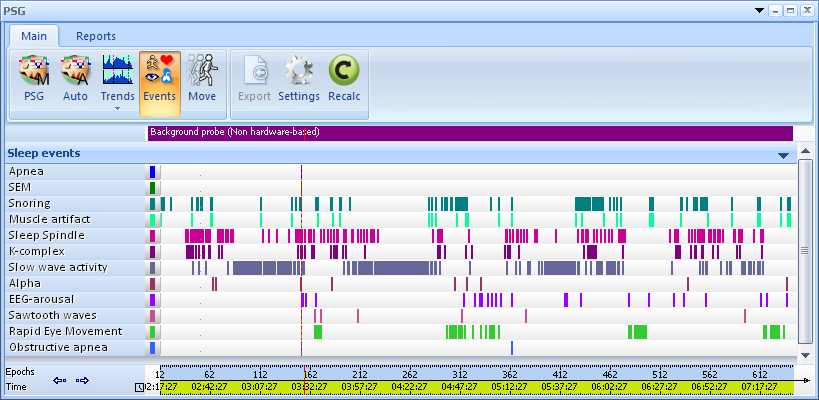
Option of displaying of physiological parameters change dynamics (such as indices of encephalic activity rhythms, parameters of respiration and cardiovascular system activity, etc.) in the form of trends for doctor’s visual evaluation. 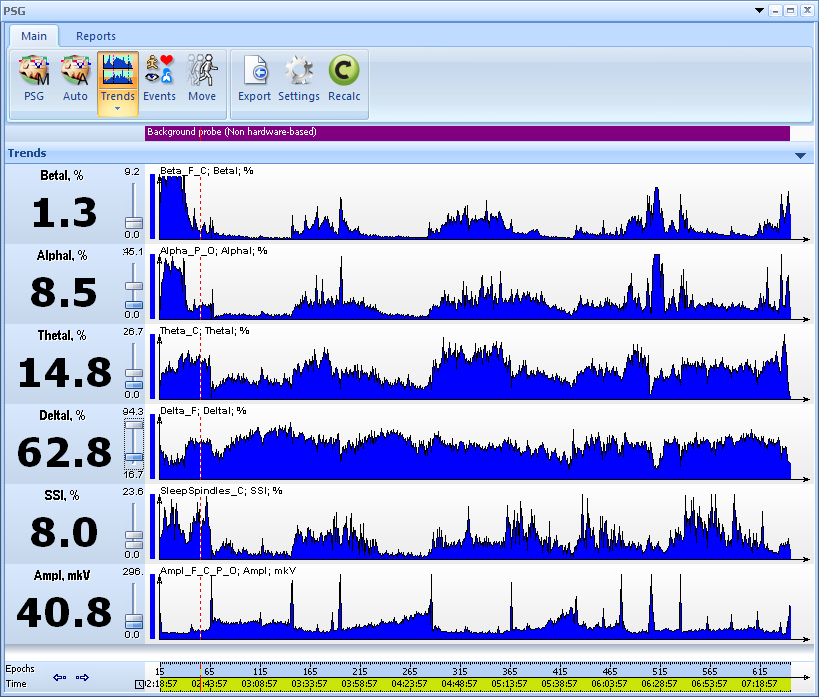
Use of mathematic treatment to analyze signals: different variants of spectral analysis and mapping. 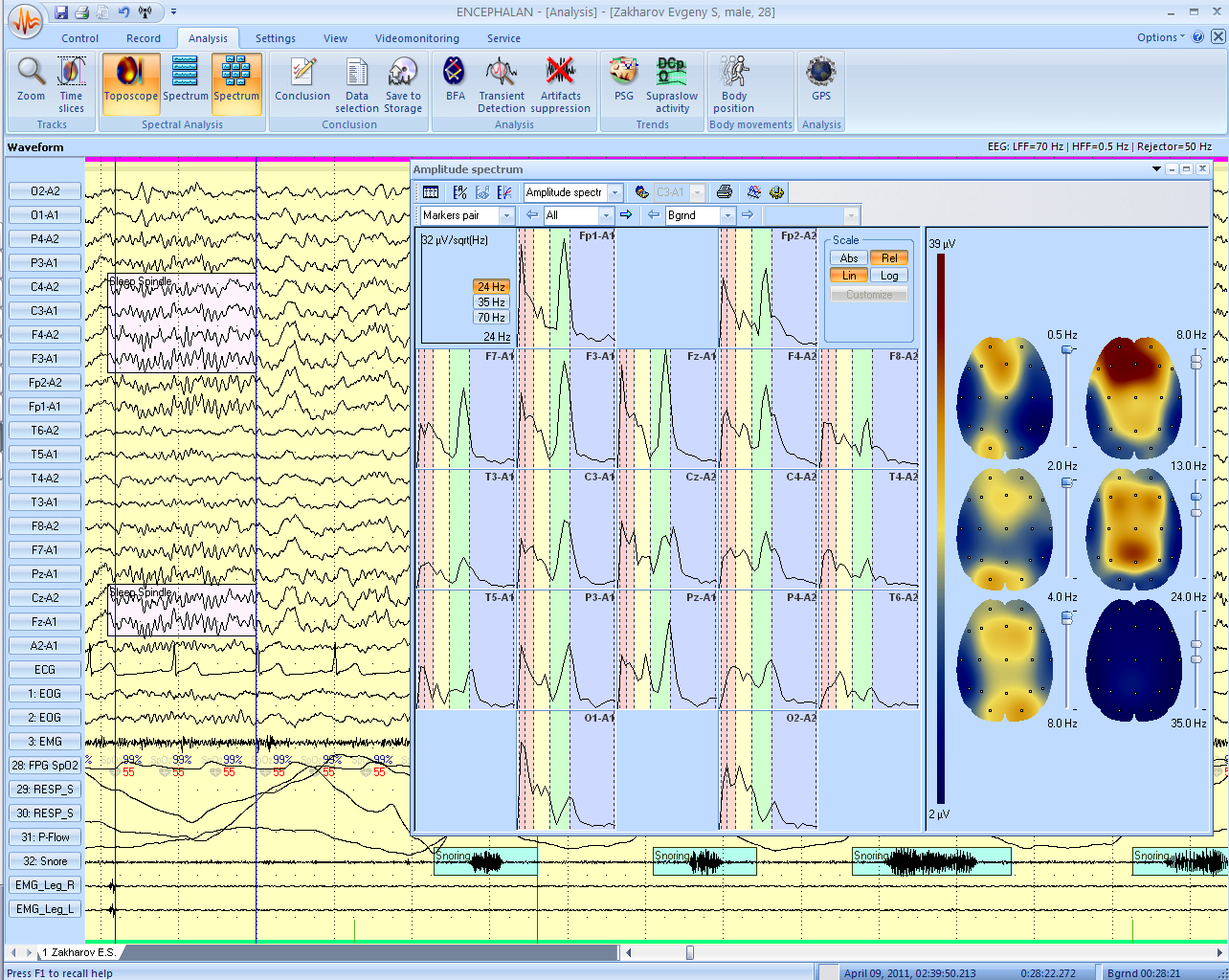
Spectral analysis, patient’s body position, power spectrum and zoomed in signal display. 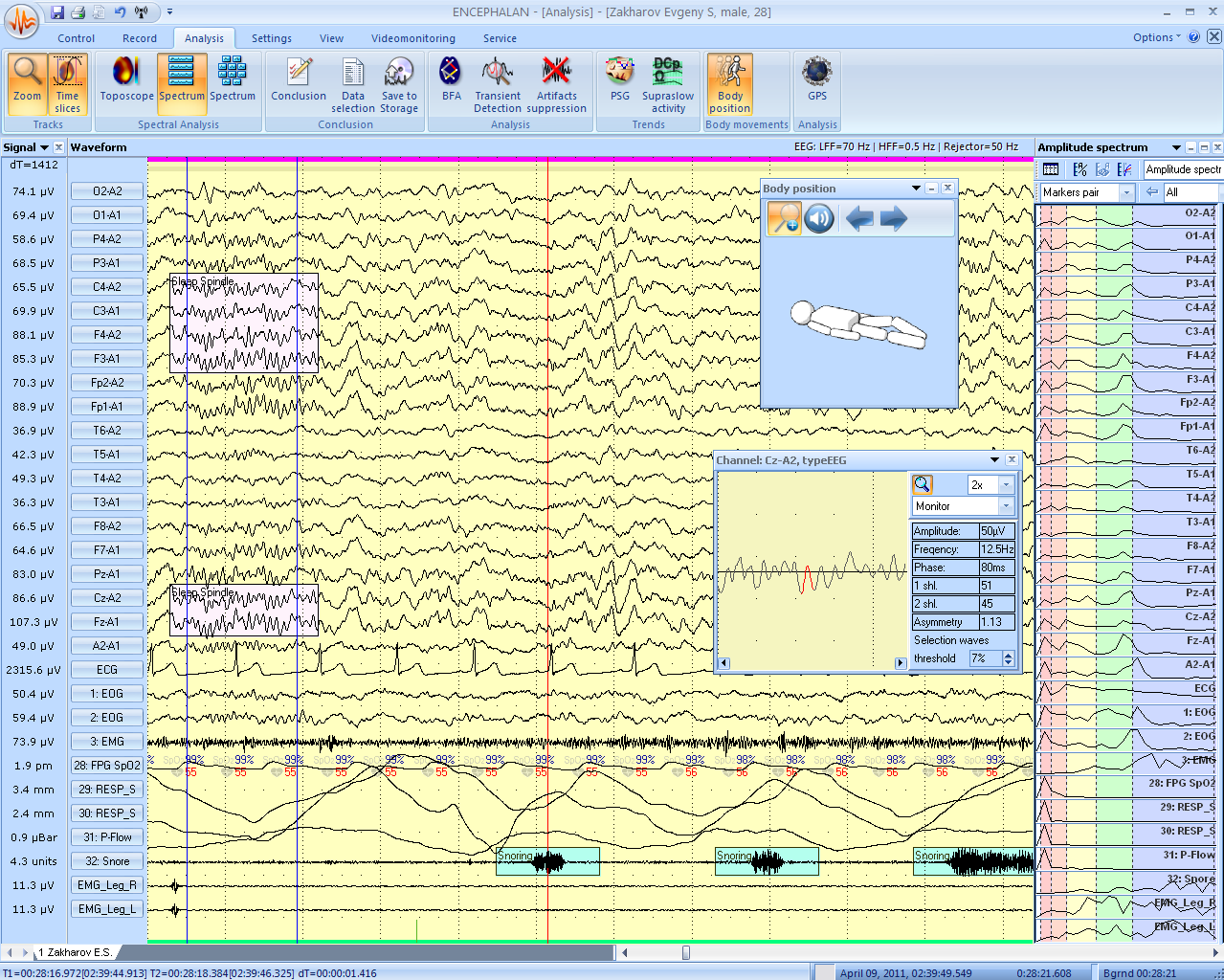
Sleep stages distribution. 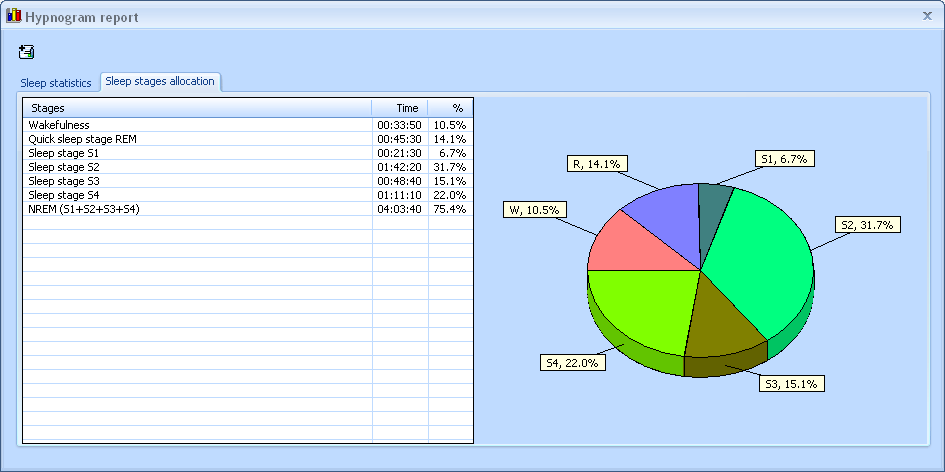
Sleep statistics. 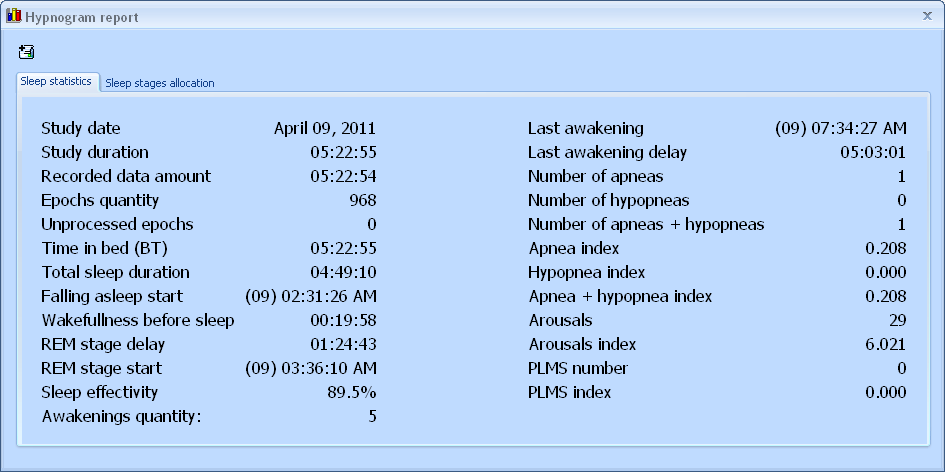
The conclusion, containing information on all the most important sleep parameters, data on blood oxygen saturation, information on respiratory and movement disorders. 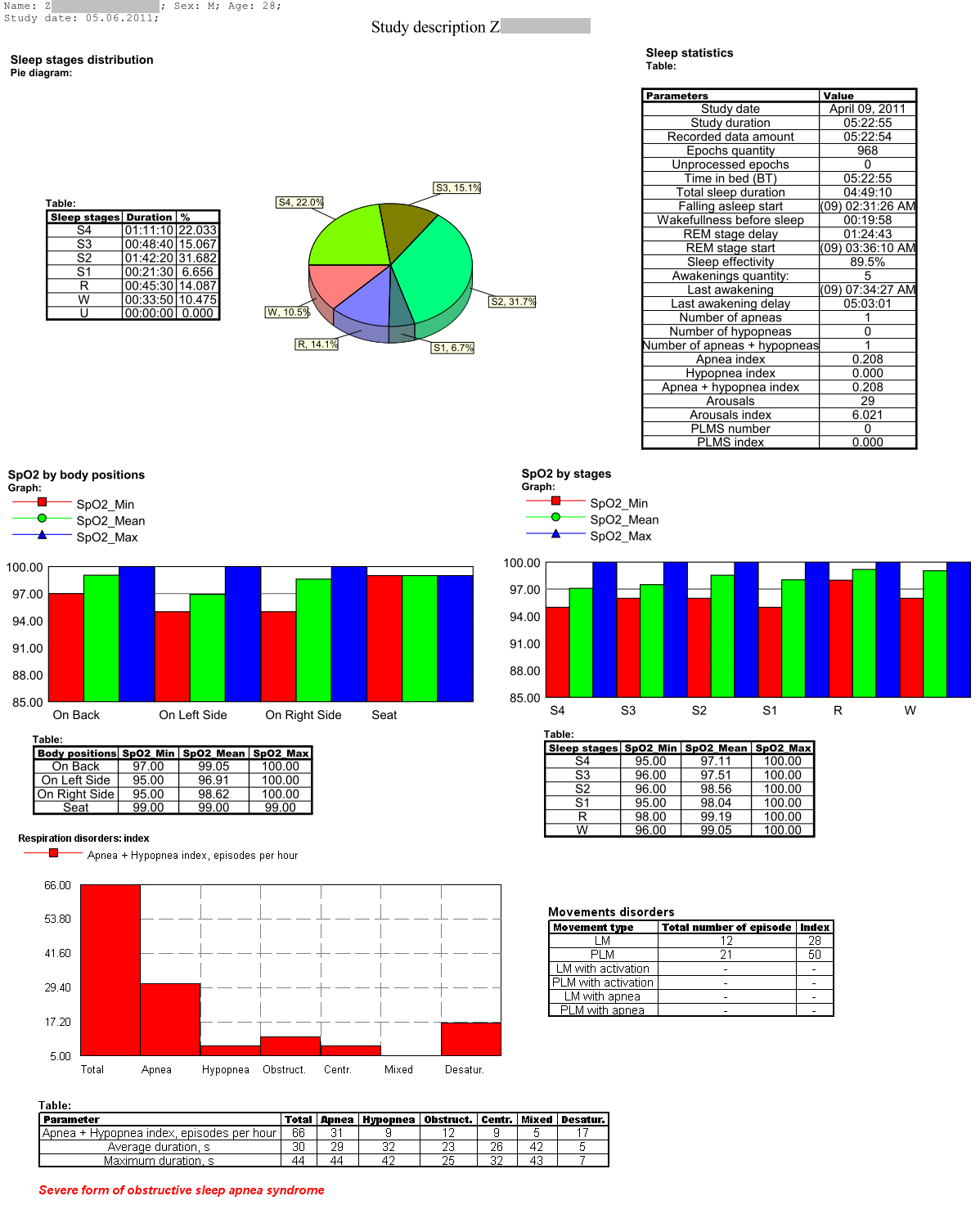
|